About 80
Angiosperms are classified into two groups: Dicots and Monocots
Dicotyledons
- The seeds have two cotyledons (and thus the name).
- Leaf venation: Reticulate
- Flower: Tetramerous or Pentamerous (4 or 5 members in each floral whorls)
- Eg: Pea, Rose, Mustard, Eucalyptus etc.
Monocotyledons
- The seeds have a single cotyledon (and thus the name).
- Leaf venation: Parallel
- Flower: Trimerous (3 members in each floral whorls)
- Eg: Banana, Cereals, Palm grasses, Bamboo etc.
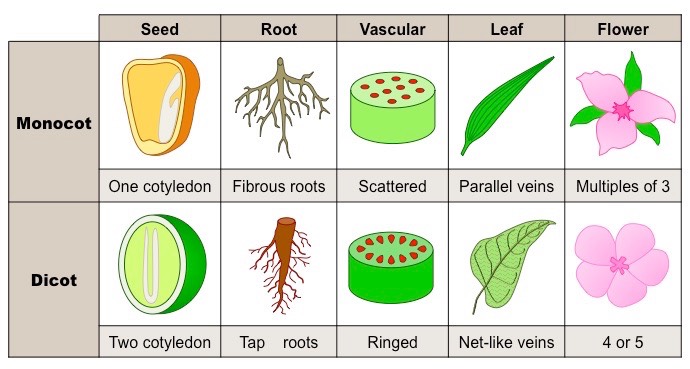
Habitat
Angiosperms are found in a wide range of habitats, except sea. Only two species are found in the ocean – Zostera and Thalassia. The size of angiosperms can also vary widely. It ranges from the small plants Wolffia to tall trees like Eucalyptus.
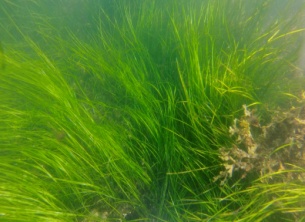
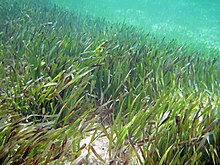
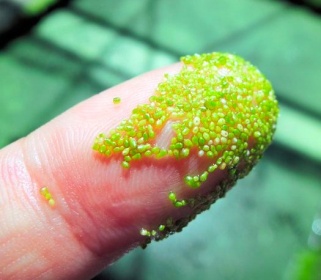
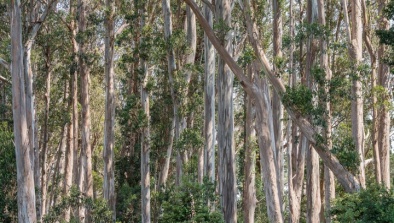
Zostera Thalassia Wolffia Eucalyptus
Morphology
The plant body has distinct stem, root and leaves. These are the vegetative (non-reproductive) part. Flower is the reproductive part. Leaves along with its petiole and stem, form the shoot system. Root and its branches form the root system.
Reproduction
The sporophyte is the main plant body and it is the dominant generation. The gametophyte stage is restricted to the reproductive phase of the plant. The male gametophyte is the pollen grain and the female gametophyte is the embryo sac.
Stamen is the male sex organ (or the androecium). It is composed of a slender filament and an anther at the tip. Inside the anther, the pollen mother cell undergoes meiosis to produce four haploid spores. Each of the haploid spores develops into pollen grains. The pollen grain is the male gametophyte.
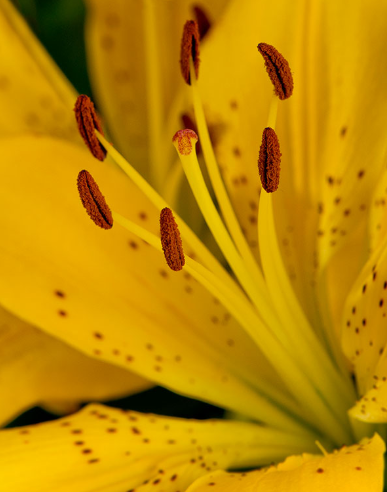
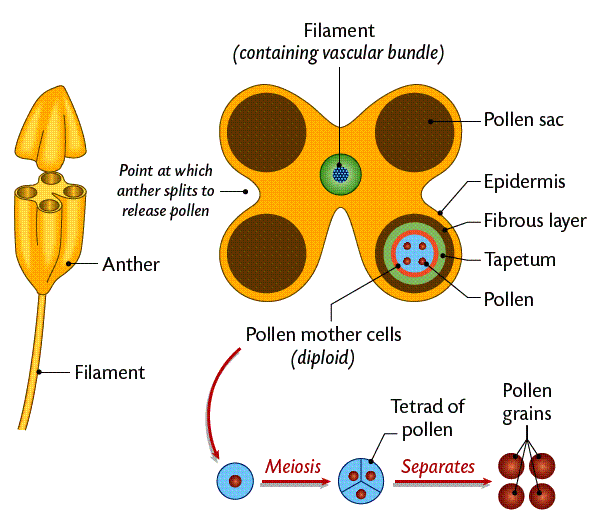
The female organ (or the gynoecium) is the carpel. It is composed of style, stigma and an ovary. Multiple fused carpels form a pistil. An ovary consists of one or more ovules. Within each ovule, there is a megaspore mother cell, which undergoes meiosis to form four haploid megaspores. One of the spores will survive, others will disintegrate. The survived spore undergoes mitosis to produce an 8-nucleate cell. This cell, along with its surrounding membrane is called an embryo sac.
The embryo sac is the female gametophyte.
It is a 3– celled apparatus.
Formation Of The Embryo SAC
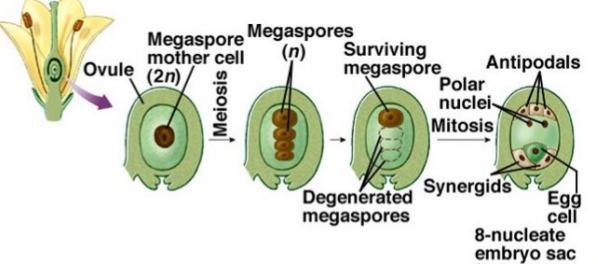
An embryo sac is composed of:
1 egg cell
2 synergids
3 antipodal cells
2 polar nuclei
In a flower, the stamens surround the carpel. Pollen grains, released from the anther are carried by wind or any other agents to the stigma of the carpel. This process is called pollination. Pollen grains will germinate on the stigma and grows through the style towards the ovule forming a pollen tube. The pollen tube enters the embryo sac and the two male gametes are discharged.
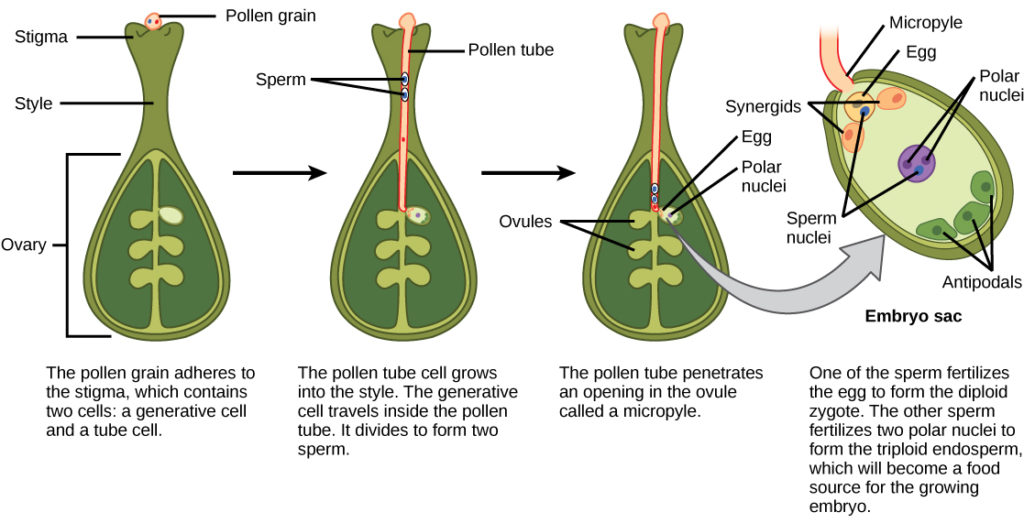
.
One of the male gamete fuses with the egg cell to form a zygote, and this process is called syngamy. The other gamete (n) will fuse with the diploid secondary nucleus (2n) to form a triploid (3n) primary endosperm nucleus (PEN). Since there are two fusions (syngamy and triple fusion) this process is called Double fertilization. This event is unique to the angiosperms.
The zygote develops into an embryo (with one or two cotyledons) and the PEN develops into endosperm which provides nourishment to the developing embryo. The synergids and antipodals degenerate after fertilization. During these events the ovules develop into seeds and the ovaries develop into fruit.
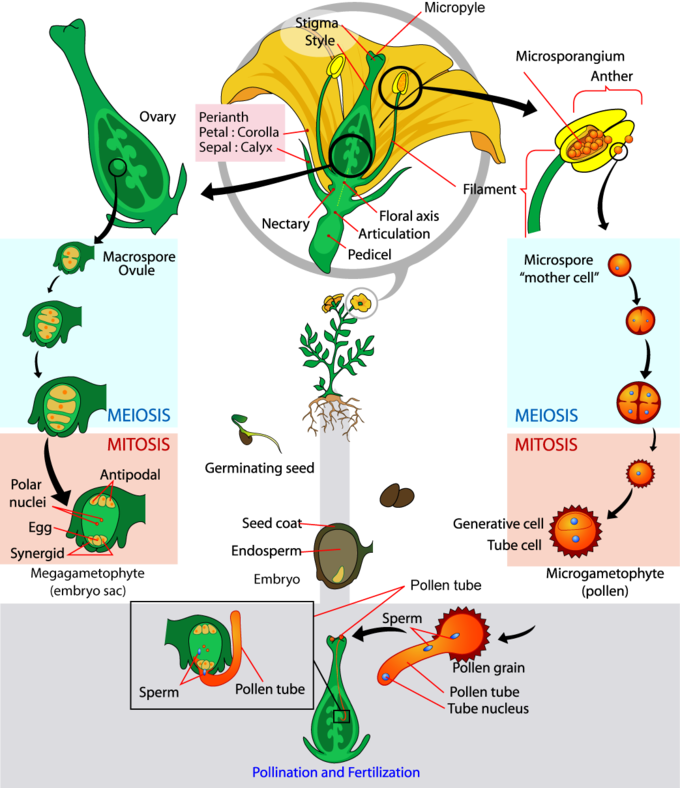
Economic importance
- Source of food: Angiosperms are an important source of food to humans, animals, birds and other living organisms. Fruits, flowers, nectar, stem, leaves and sometimes the plant as a whole are consumed by many organisms.
- Source of energy: They trap solar energy and convert it to chemical energy which is stored in the tissues of the plant. This energy is transferred to other organisms through consumption.
- Base of Food chain: Angiosperms and other producers form the base of a food chain in an ecosystem.
- Commercially important goods: They are the primary source of various consumer goods such as fibres, spices, pharmaceuticals.
- Secondary metabolites: Angiosperms produce a variety of commercially and medicinally important secondary metabolites such as alkaloids, essential oils, quinines etc. and certain toxins.